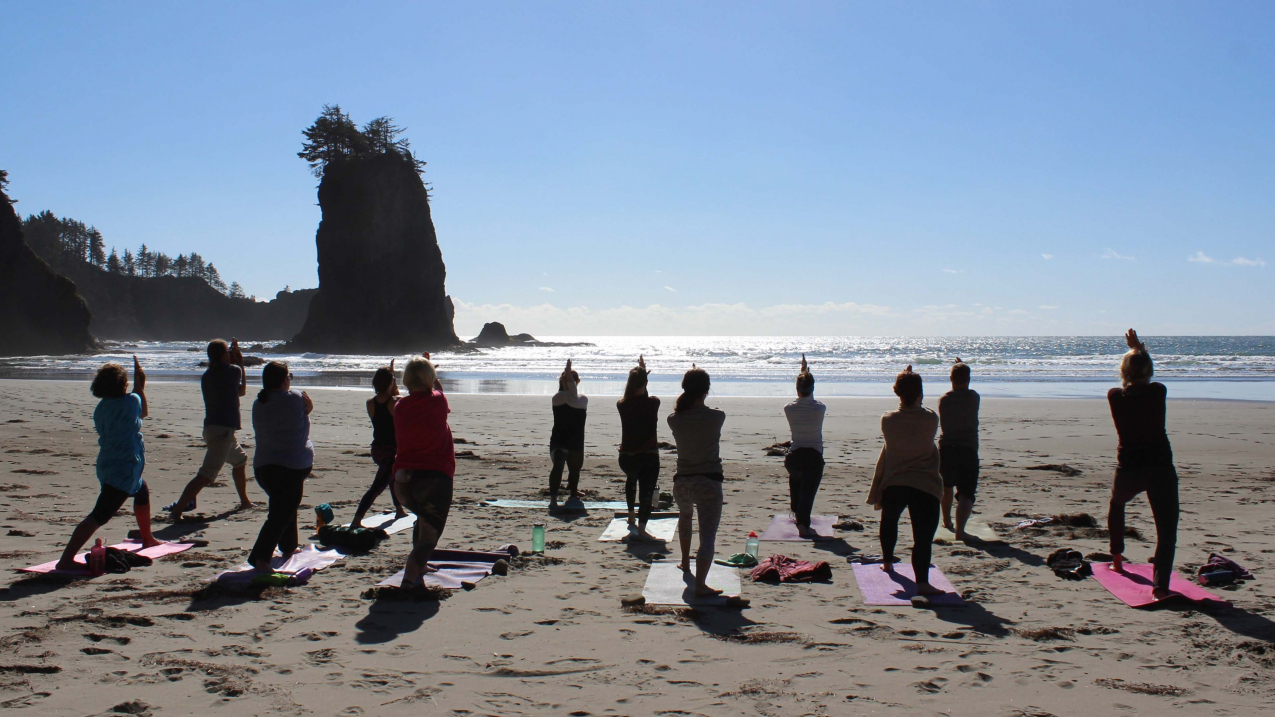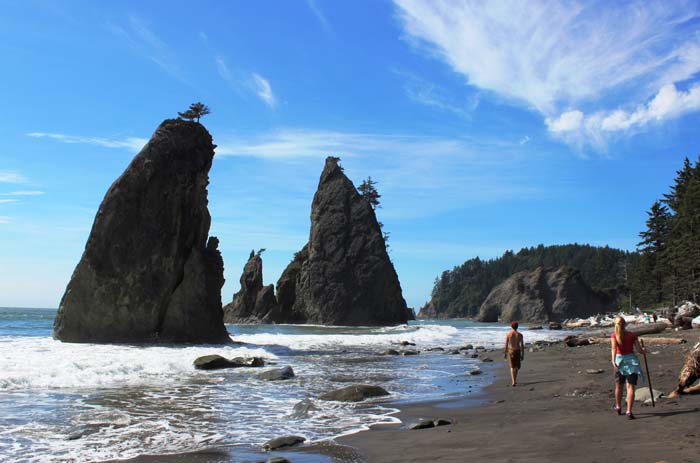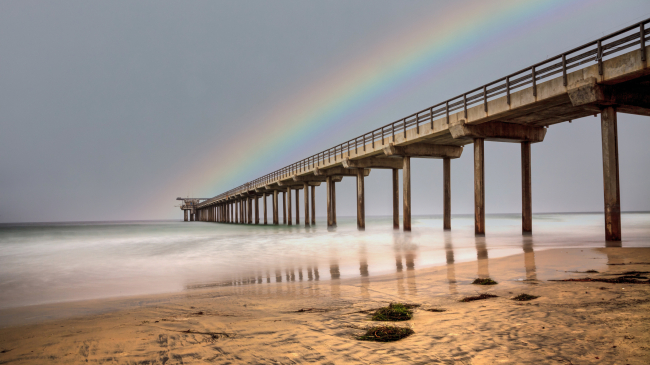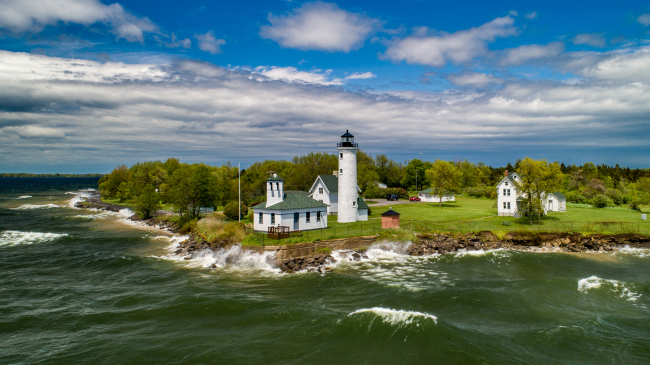41 percent of Washington state households visited the region
Visitors to NOAA’s Olympic Coast National Marine Sanctuary and the immediate area boosted the region’s economy with $102 million in spending, supporting nearly 1,200 jobs and generating $46 million in local income for business owners and employees in 2014, according to a NOAA analysis using the most recent figures available.

Visitors practice yoga with a view of the Olympic Coast National Marine Sanctuary. (Image credit: NOAA)





